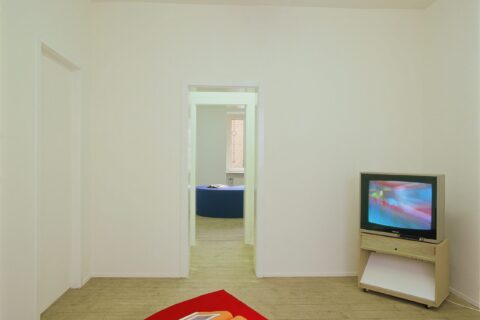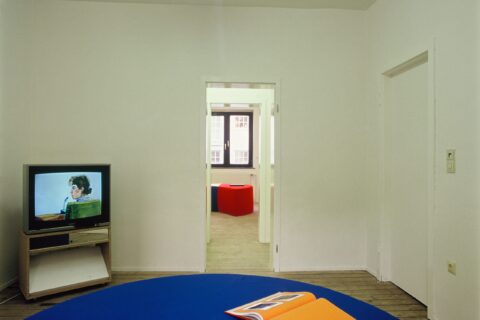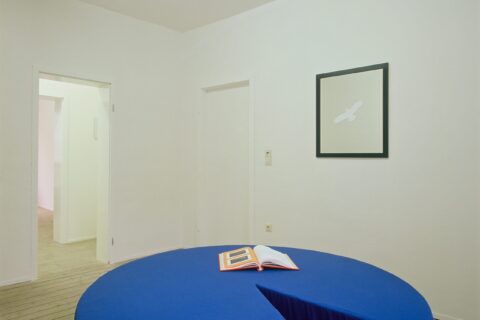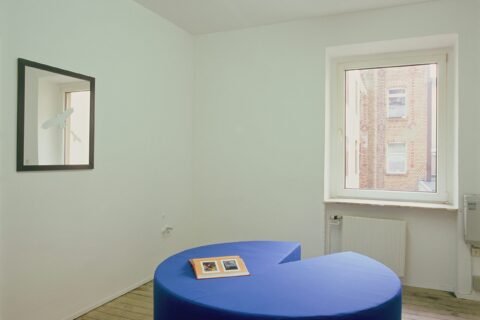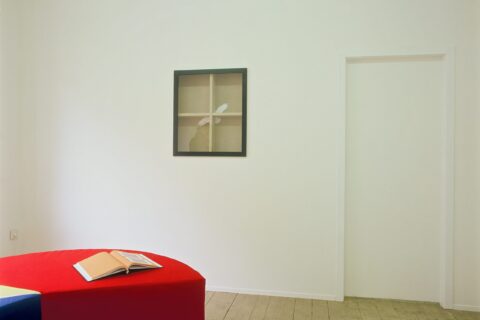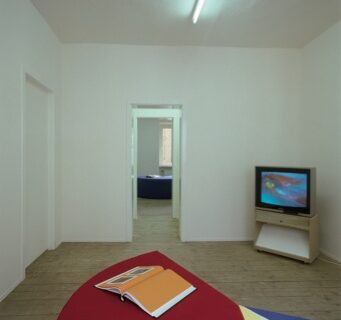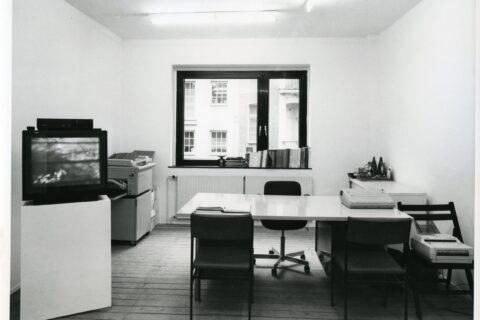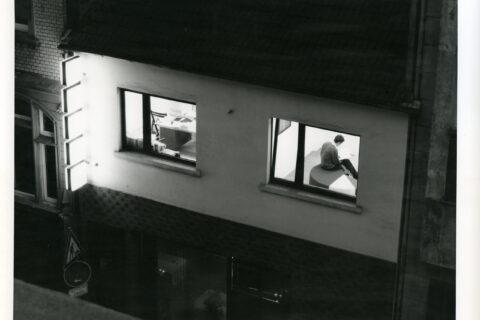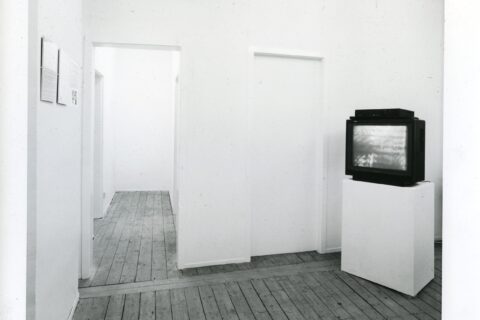Fareed Armaly Contact
11/02/1992 – 14/03/1992
(No Opening)
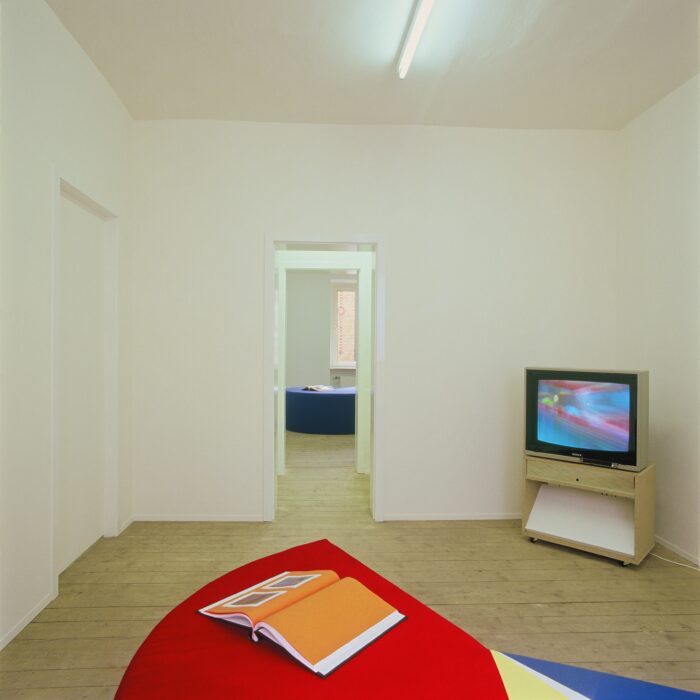
Fareed Armaly
„Contact“, 1992
Ausstellungsansicht
Galerie Christian Nagel, Köln
Photo: Andrea Stappert
„Contact“, 1992
Ausstellungsansicht
Galerie Christian Nagel, Köln
Photo: Andrea Stappert
„Contact“, 1992
Ausstellungsansicht
Galerie Christian Nagel, Köln
Photo: Andrea Stappert
„Contact“, 1992
Ausstellungsansicht
Galerie Christian Nagel, Köln
Photo: Andrea Stappert
„Contact“, 1992
Ausstellungsansicht
Galerie Christian Nagel, Köln
Photo: Andrea Stappert
„Contact“, 1992
Ausstellungsansicht
Galerie Christian Nagel, Köln
Photo: Andrea Stappert
„Contact“, 1992
Ausstellungsansicht
Galerie Christian Nagel, Köln
Photo: Andrea Stappert
„Contact“, 1992
Ausstellungsansicht
Galerie Christian Nagel, Köln
Photo: Andrea Stappert
„Contact“, 1992
Ausstellungsansicht
Galerie Christian Nagel, Köln
Photo: Andrea Stappert
Press Release
The gallery Nagel interior has been redesigned. The exhibition space was one room with two windows looking onto the street. The office was in the black. Its window was half the size of those in the exhibition space and overlooked the court. Access to both was through a small foyer.
The exhibition space has been rotated 90 degrees. The new axis splits one point of view outward into two in opposite directions. This makes something common to European urban architecture obvious, that it points to two different senses of community, and it emphasizes the role types of framing in respect of viewpoint.
The exhibition space is now two, symmetrical rooms lying opposite each other across a single corridor. They are as near identical as possible. One space - the one missing the Siemens "communication box" - is a reflection of the other. It has something like "real walls"/"synthetic walls" - or maybe just " real walls 2" or "real walls too".
Before the gallery was the exhibition space, with the office where it was by default. The new arrangement takes a more ordered relation to those functions. The signs - closed door, open door, symmetry, asymmetry, interior court, view, exterior street view, etc - are worked out as architecture: pragmatic concerns set symbolic functions.
The organization and scale of things now is more along the lines of the standard apartment. The room relations are calculated to problematize terms such as "neutral" and "normal", and simple binaries. Among several functions the mirroring device, for example, refers to but does not only represent something like "the social distinction between space and a space as a sign of real space, or space itself that maybe projected onto it buy a community of interest, characterizing it in some terms, as: produced, real, normal, correct, synthetic, and or etc.
In so far as it is in these terms that the 'individual' - understood to be operating in (some) relation to a shifting, splitting dynamic set of processes - is constructed, character becomes critical. Here terms such as 'member of community', 'family, 'representative of the nation', etc., get a cultural definition, and generally culture is seen as periodic, periods described in terms of how hallmark problematics are negotiated. The structure of the new design is the structure of that process. The new architecture is built on and of the old one- on and of the borders of a closed world seen from and for one view, where political, racial, ethnic, and cultural boundaries reproduce social bases.
Historically, in terms of Cologne art scenes emerging as communities, Gallery Nagel has a high profile. In media reflections upon it, it is intentionally symbolically, the occasion for discourse on the internalization of the site as the community.
By now the institutional and gallery critiques developed in the 60s and 70s are virtually universal. These developments inform the discourse of galleries and producers. They are built into the architecture and furniture of the process. The difficulty is not transparently to arrange them, but to put hem in a viable order.
The strength of 'the gallery' as a forum has perhaps been in its obvious unidealness. Given 'universality' (above), critical cultural production has attempted to cover - not merely illustrate - the nexus of relationships that form it, the conditions that describe real frontiers as everyday social and political limits, in terms of investments and values.
While a gallery may be historically characterized as 'transparent' or 'neutral' in respect of its attitude to such problematics, the institution is always characterizable in terms of what is or is not allowed. This is something it has in common with all other (such) spaces. As such a gallery's character is its arguments, e.g., concerning hiding or displacing one set of frontiers with or for another, making transparent one set of limits at the opaque expense of others, and which limits and which kinds of forums, communities of interest figure, and...?
For this exhibition, the sign is not on the frontier, it is it. In the reconfigured space, the interiors - onto interiors, onto interiors with windows, etc - are displayed within.
The companion publication to the exhibition presents aspects of the 'working script'. This includes material collected and organized to display its development and intersecting fields of interest.
In the dynamic of the eras a certain nostalgia for the 70s - projected as a site for the staging of the last decade - is emerging for the values and types of differences that were articulated in and as possible forms of cultural production.
The 70s as they appear to be recalled, given the way they appear to be being used, amount to a framework of meeting points, where, by chance, sign functions split along exterior/interior and optimistic/revisionistic lines.
The publication is built around German-language TV programs from the period around 1972, that, for me, exemplify anarchic and intentionally unreal, 'synthetic' approaches to the use of 'the family' as the category given to embodying social formations.
The material concerns relations that dwell in collective memory, lines drawn in the media, postwar restructuring, and real (and or 'expressed') senses of an intensification of the 'us/them' binary that informs certain 70s discourses generally.
In part, the framework of the publication derives from recent interviews which focus on similarities and differences in the basic structures of specific types of German language cultural production for TV, programs where the frontiers of TV and social formations come in contact and overlap.
The indexed mass-media works relate to specific communities. They have in common that they frame windows introduced into the idea transparency of TV, each in their own ways. Moreover, the TV family in R.W. Fassbinders Acht stunden sind Kein Tag ( Eight Hours Are Not a Day), for West Deutsche Rundfunk, in Wünsch Dir Was (What's Your Wish), the TV family game show, or implicit to the narrative of courtroom drawing and painting, affords me, as an American, a set of categories in terms of which to orient myself in the relative space of German culture.
In the material considered, the TV family is differentiated not so much by type as by the producer's approaches. They are a kind of window onto the way influences upon the media and the media picture itself operate at 1:1.
